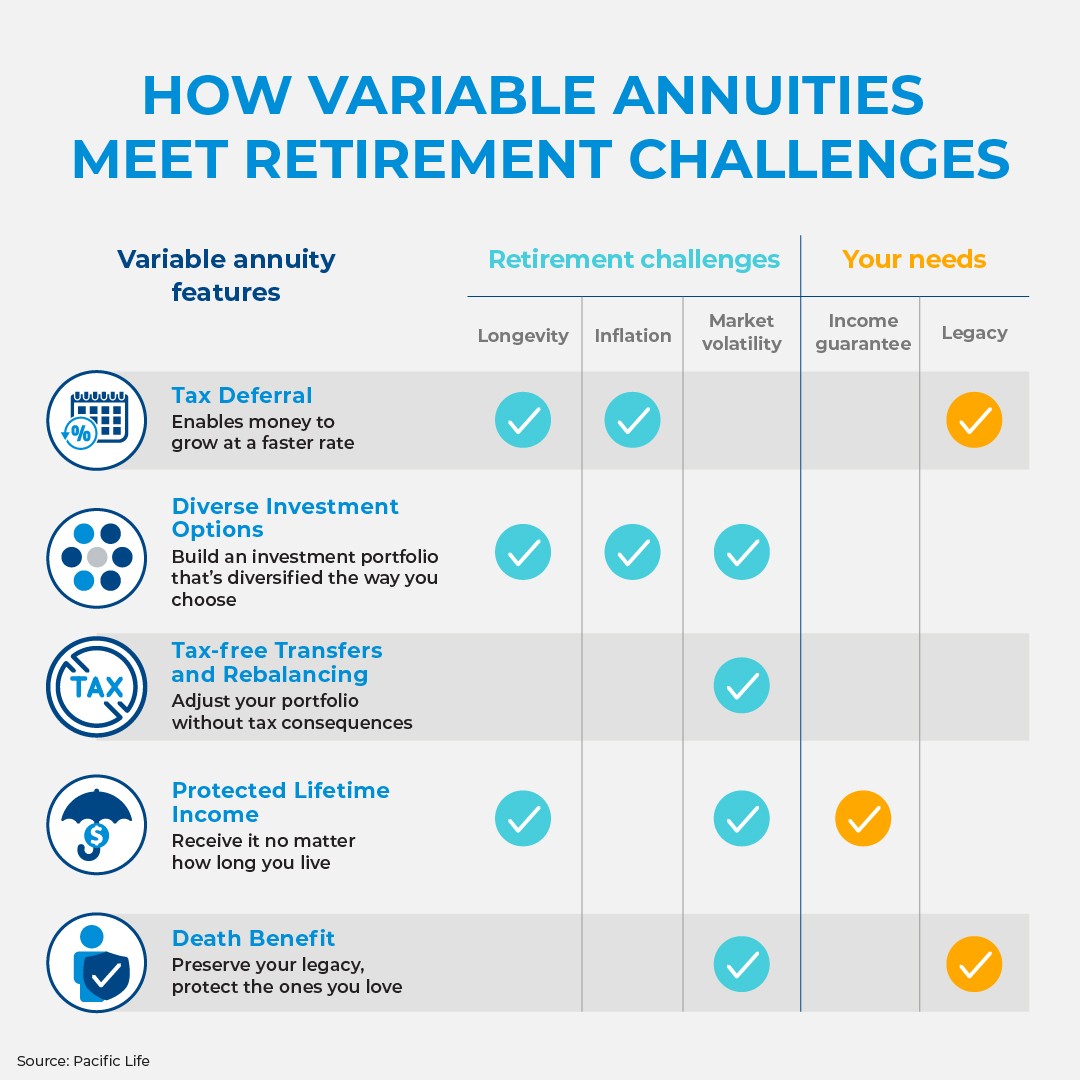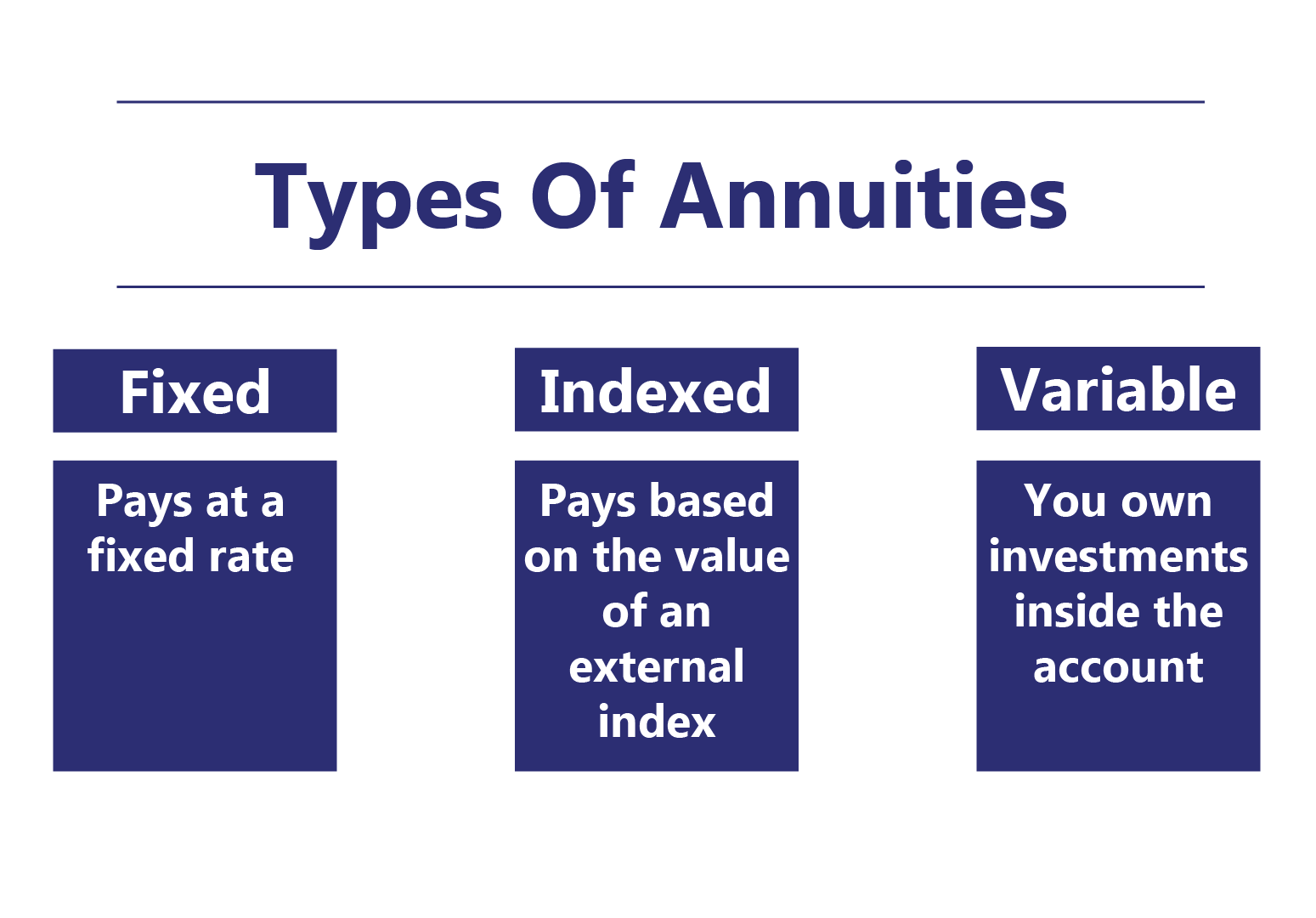All Categories
Featured
Table of Contents
Simply as with a fixed annuity, the proprietor of a variable annuity pays an insurer a lump sum or series of settlements for the guarantee of a series of future repayments in return. As discussed over, while a taken care of annuity expands at an assured, consistent rate, a variable annuity expands at a variable rate that depends upon the performance of the underlying investments, called sub-accounts.

During the accumulation phase, assets bought variable annuity sub-accounts grow on a tax-deferred basis and are exhausted only when the agreement proprietor takes out those profits from the account. After the build-up stage comes the revenue stage. Over time, variable annuity assets should theoretically boost in worth up until the agreement proprietor chooses he or she would love to begin taking out money from the account.
The most substantial issue that variable annuities typically present is high expense. Variable annuities have several layers of costs and costs that can, in accumulation, create a drag of approximately 3-4% of the contract's value annually. Below are one of the most typical costs related to variable annuities. This cost makes up the insurer for the risk that it presumes under the terms of the agreement.
Highlighting Annuities Fixed Vs Variable Key Insights on Your Financial Future Defining the Right Financial Strategy Pros and Cons of Various Financial Options Why Choosing the Right Financial Strategy Is a Smart Choice How to Compare Different Investment Plans: Explained in Detail Key Differences Between Different Financial Strategies Understanding the Rewards of Variable Annuities Vs Fixed Annuities Who Should Consider Fixed Vs Variable Annuities? Tips for Choosing Fixed Income Annuity Vs Variable Growth Annuity FAQs About Fixed Annuity Vs Variable Annuity Common Mistakes to Avoid When Planning Your Retirement Financial Planning Simplified: Understanding Your Options A Beginner’s Guide to Smart Investment Decisions A Closer Look at Fixed Vs Variable Annuities
M&E expenditure charges are computed as a portion of the agreement value Annuity issuers hand down recordkeeping and other management costs to the agreement owner. This can be in the form of a flat annual charge or a percentage of the agreement worth. Management fees might be consisted of as component of the M&E threat charge or may be assessed individually.
These charges can range from 0.1% for passive funds to 1.5% or more for proactively managed funds. Annuity agreements can be customized in a variety of means to serve the specific demands of the contract proprietor. Some usual variable annuity motorcyclists include ensured minimal accumulation benefit (GMAB), assured minimum withdrawal advantage (GMWB), and ensured minimum income benefit (GMIB).

Variable annuity contributions supply no such tax obligation deduction. Variable annuities often tend to be highly inefficient lorries for passing wide range to the future generation because they do not take pleasure in a cost-basis modification when the initial contract proprietor passes away. When the proprietor of a taxed financial investment account passes away, the price bases of the financial investments held in the account are adapted to mirror the marketplace prices of those investments at the time of the proprietor's fatality.
Highlighting the Key Features of Long-Term Investments A Closer Look at How Retirement Planning Works Defining the Right Financial Strategy Advantages and Disadvantages of Fixed Index Annuity Vs Variable Annuity Why Fixed Index Annuity Vs Variable Annuities Is a Smart Choice Fixed Annuity Vs Equity-linked Variable Annuity: A Complete Overview Key Differences Between Different Financial Strategies Understanding the Key Features of Fixed Vs Variable Annuities Who Should Consider Strategic Financial Planning? Tips for Choosing the Best Investment Strategy FAQs About Planning Your Financial Future Common Mistakes to Avoid When Choosing a Financial Strategy Financial Planning Simplified: Understanding Fixed Annuity Vs Equity-linked Variable Annuity A Beginner’s Guide to Smart Investment Decisions A Closer Look at Annuity Fixed Vs Variable
Such is not the instance with variable annuities. Investments held within a variable annuity do not get a cost-basis adjustment when the initial proprietor of the annuity passes away.
One considerable concern associated to variable annuities is the possibility for conflicts of rate of interest that might feed on the component of annuity salespeople. Unlike a financial advisor, that has a fiduciary task to make investment choices that benefit the client, an insurance policy broker has no such fiduciary obligation. Annuity sales are highly financially rewarding for the insurance policy experts that offer them due to high ahead of time sales commissions.

Lots of variable annuity agreements contain language which places a cap on the percent of gain that can be experienced by certain sub-accounts. These caps protect against the annuity proprietor from totally participating in a portion of gains that could otherwise be enjoyed in years in which markets generate significant returns. From an outsider's viewpoint, presumably that financiers are trading a cap on investment returns for the abovementioned guaranteed flooring on investment returns.
As noted above, give up costs can severely limit an annuity owner's ability to relocate properties out of an annuity in the very early years of the contract. Better, while most variable annuities enable contract owners to withdraw a specified quantity during the build-up phase, withdrawals past this quantity typically lead to a company-imposed fee.
Withdrawals made from a fixed interest rate investment option could likewise experience a "market worth adjustment" or MVA. An MVA changes the value of the withdrawal to mirror any type of modifications in rate of interest rates from the time that the cash was spent in the fixed-rate option to the moment that it was withdrawn.

Fairly often, also the salesmen that market them do not totally comprehend exactly how they work, therefore salesmen often victimize a customer's emotions to offer variable annuities instead of the merits and viability of the products themselves. Our team believe that financiers must totally comprehend what they own and just how much they are paying to possess it.
Analyzing Variable Vs Fixed Annuity Key Insights on Retirement Income Fixed Vs Variable Annuity What Is the Best Retirement Option? Benefits of Choosing the Right Financial Plan Why Variable Annuity Vs Fixed Annuity Matters for Retirement Planning How to Compare Different Investment Plans: How It Works Key Differences Between Different Financial Strategies Understanding the Risks of Deferred Annuity Vs Variable Annuity Who Should Consider Fixed Income Annuity Vs Variable Growth Annuity? Tips for Choosing the Best Investment Strategy FAQs About Variable Annuity Vs Fixed Indexed Annuity Common Mistakes to Avoid When Planning Your Retirement Financial Planning Simplified: Understanding Fixed Annuity Vs Equity-linked Variable Annuity A Beginner’s Guide to Smart Investment Decisions A Closer Look at Fixed Vs Variable Annuity Pros Cons
The very same can not be stated for variable annuity properties held in fixed-rate investments. These properties legally belong to the insurance firm and would consequently go to threat if the business were to stop working. Any kind of guarantees that the insurance policy business has actually agreed to supply, such as a guaranteed minimum earnings advantage, would be in concern in the event of a business failure.
For that reason, potential buyers of variable annuities ought to recognize and consider the economic condition of the issuing insurance policy firm prior to participating in an annuity contract. While the benefits and disadvantages of various sorts of annuities can be discussed, the real issue surrounding annuities is that of suitability. Place merely, the question is: who should own a variable annuity? This question can be hard to respond to, provided the myriad variations readily available in the variable annuity cosmos, but there are some standard guidelines that can help investors make a decision whether or not annuities ought to play a role in their economic strategies.
As the stating goes: "Purchaser beware!" This write-up is prepared by Pekin Hardy Strauss, Inc. Fixed annuities vs market risk. ("Pekin Hardy," dba Pekin Hardy Strauss Wide Range Monitoring) for educational purposes only and is not planned as an offer or solicitation for organization. The information and data in this short article does not constitute lawful, tax obligation, bookkeeping, financial investment, or various other specialist suggestions
Table of Contents
Latest Posts
Exploring Fixed Index Annuity Vs Variable Annuities Everything You Need to Know About Annuities Fixed Vs Variable Defining Fixed Vs Variable Annuity Pros and Cons of Fixed Vs Variable Annuity Pros Con
Understanding Fixed Vs Variable Annuity Pros And Cons A Comprehensive Guide to Investment Choices Defining the Right Financial Strategy Benefits of Choosing the Right Financial Plan Why Variable Annui
Decoding How Investment Plans Work Everything You Need to Know About Fixed Annuity Or Variable Annuity What Is Variable Annuity Vs Fixed Indexed Annuity? Advantages and Disadvantages of Different Reti
More
Latest Posts